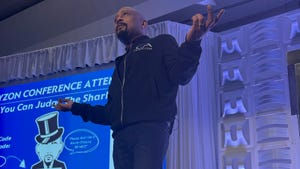Stretching Your Clients’ Charitable DollarsStretching Your Clients’ Charitable Dollars
Tools to use when portfolios have taken a hit.

With a potential recession looming and portfolios down substantially, many nonprofits (and university endowments) need your clients’ help now more than ever. Your clients may be asking you if they can still afford to give as much as they typically do. Chances are they’ve been asking you about recoverable grants, philanthropic portfolios and other techniques for stretching their charitable dollars when their own portfolios may have taken a hit. Make sure you do your homework on these tools before you use them (or brush them off).
Recoverable Grants
A recoverable grant is a giving strategy that allows charitable capital to be “recovered” by the donor if the non-profit organization achieves its agreed-on objectives. Recovery is typically through a charitable vehicle such as a foundation or a donor-advised fund (DAF). This return of capital option enables donors potentially to multiply their charitable impact over many years by reusing the same funds for future grantmaking. Much like a restricted grant, which can only be spent for the purpose designated by the donor, recoverable grant funds have specific use cases such as funding specific revenue-generating programs, or filling a short-term gap between the time a nonprofit might need to provide services and the time when funding arrives.
In my experience, a recoverable grant is just a fancy way of making a loan. Also, the minimum donation size for these grants tends to start around $25,000, and there’s typically a one-time fixed fee required at the time the grant is made. Also remember that these are grants, not investments. If the nonprofit doesn’t hit its goals and chooses not to return any of the funds allocated through a recoverable grant, then the money converts to a traditional grant. There’s no recourse for the donor to recover the funds for additional charitable use if the project doesn’t deliver on its objectives.
Unless you enjoy being a loan officer or venture capitalist, just make your gifts for the purpose of supporting causes you believe in and let the tax code work to your advantage.
Philanthropic Portfolios
As with financial investments, a risk-based approach to giving enables donors to spread their largesse over a variety of “safe” predictable giving (that is, well established not for profits) and for “riskier” giving to newly established charitable organizations or to new pilot initiatives at existing not-for-profits. The thinking is that safe giving can only make so much impact and that your dollars will potentially make a bigger impact at the less established charities. The flipside of course is that the money has a higher likelihood of being squandered if the initiative falls flat or goes off the rails.
Philanthropic asset allocation is a nice idea in theory, but unless you have the time to get heavily involved in the charity’s operations, you really can’t influence its outcome. As a funding source, clients can accomplish the same balanced portfolio approach with a DAF, a charitable foundation or a community foundation. Again, that’s where you come in.
Misconceptions About DAFs
Speaking of DAFs, now’s the time of year when it’s customary to bash DAFs as a tax dodge for the wealthy – a maneuver that allows the wealthy to park huge sums of money indefinitely and reap the tax benefits without having to distribute the money to charity. Elon Musk, Robert Mercer and dozens of other ultra-wealthy have been accused of exploiting this tactic, but it’s simply not true.
Let me be clear: Once you give your money to a DAF it’s gone to charity and out of your estate. As I wrote in this column earlier this year (In Defense of Elon Musk’s Donor-Advised Fund) “If Musk’s Tesla shares are sitting in a DAF, and I believe they are, the money has in fact been given away. DAFs represent a completed gift to charity. Period.”
Further, Musk’s approach makes sense if you think about it. No conscientious donor could efficiently distribute $5.7 billion in a very short time period. Giving so much money in a single donation would break the infrastructure of even the best-run charities in the world.
Randy A. Fox, CFP, AEP is the founder of Two Hawks Consulting LLC. He is a nationally known wealth strategist, philanthropic estate planner, educator and speaker.
About the Author
You May Also Like







